supplementary_material_A15020315_revised
advertisement
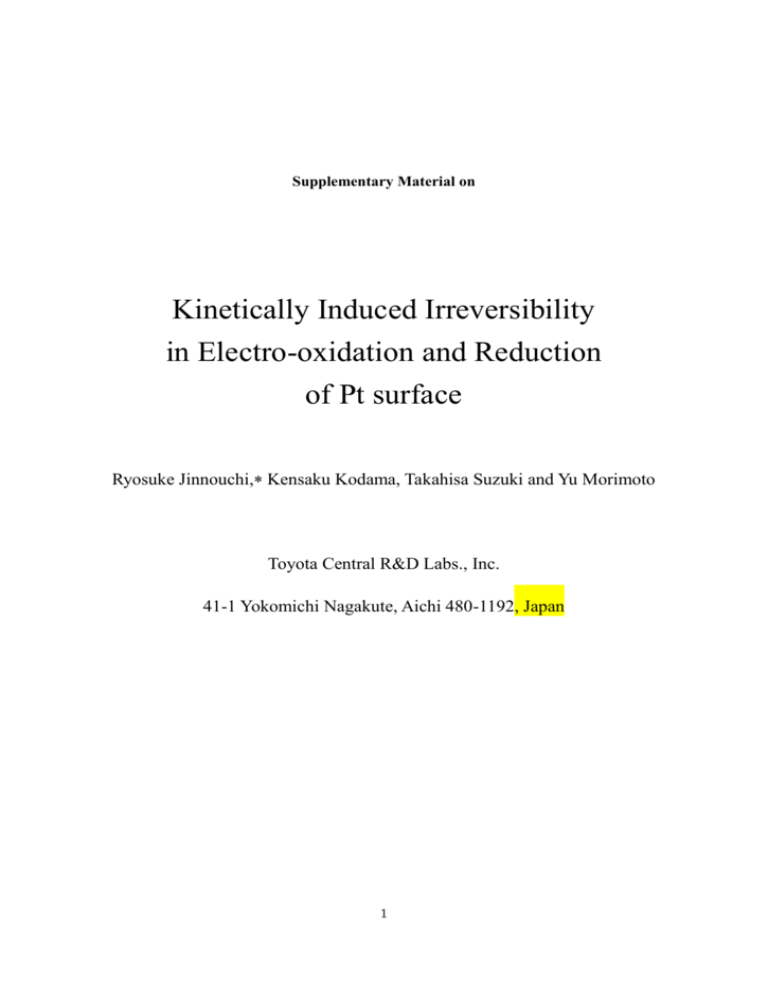
Supplementary Material on Kinetically Induced Irreversibility in Electro-oxidation and Reduction of Pt surface Ryosuke Jinnouchi, Kensaku Kodama, Takahisa Suzuki and Yu Morimoto Toyota Central R&D Labs., Inc. 41-1 Yokomichi Nagakute, Aichi 480-1192, Japan 1 A. Experimental methods to obtain Fig. 1 Sample preparations A Pt (111) surfaced single crystal (99.99%, 0.196 cm2, MaTecK) and a Pt polycrystalline (0.283 cm2) disks were annealed using electromagnetic inductive heating for 10 minutes at approximately 1300 K in the flow of a mixture of H2 and Ar (3 % H2, Taiyo Nippon Sanso, the purity of each gas: H2: 99.99999%, Ar: 99.999%). The annealed specimens were cooled slowly to room temperature in the flow of the gas mixture. Afterward the Pt (111) and polycrystalline surfaces were covered with water (Milli-Q, 18.2 MΩ) and then immersed in 0.1 M HClO4 (MERCK, Suprapur) saturated with Ar (Taiyo Nippon Sanso, 99.999%) at 0.07 V. The Pt/C electrode was prepared by depositing and then drying the catalyst ink of Pt/Vulcan (TKK, TEC10V50E, 50wt%Pt) dispersed in 24vol% isopropanol aqueous solution on a glassy carbon (0.246cm2, TOKAI CARBON) with the total amount of 1.1μgPt, and was treated with potential cycling from 0.07 V to 1.2 V (RHE) for cleaning before the electrochemical measurements. Electrochemical procedures For Pt(111) and Pt poly-crystals, the electrode potential was cycled from 0.07 V to 1.1 V (RHE). For Pt/C, the electrode potential was cycled from 0.07 V to 1.2 V (RHE). In all measurements, the electrode potential was swept at 50 mVs1. Calculations of current densities and surface coverages Current densities shown in Fig. 1 (A) are normalized with respect to geometric surface areas of used electrodes for Pt(111) and poly-Pt. For Pt nanoparticles, the current density is normalized with respect to the electrochemical surface area (ECSA) obtained by converting Faradaic charges generated through H-desorptions during the voltammetry using an empirically determined Faradaic charge per surface area of 210 Ccm2 for removing 1 monolayer of adsorbed H. The oxide amounts ox=OH+2O shown in Fig. 1 (B) are obtained by converting Faradaic charges generated through the oxide formations and reductions at U 0.4 V during voltammetries using empirically determined Faradaic charges per surface area of 240 Ccm2, 210 Ccm2 and 210 Ccm2 for Pt(111), polyPt and Pt nanoparticles, respectively, for forming or reducing 1 ML of adsorbed OH. To 2 obtain the Faradaic charges generated by H-desorptions, oxide formations and oxide removals from CVs, contributions from double layer charging and discharging need to be subtracted. In this study, the background charges for Pt(111), Poly-Pt and Pt/C were set as 1.0 Acm2, 3.5 Acm2 and 14.8 Acm2, respectively, for the anodic scan conditions and 2.0 Acm2, 2.3 Acm2 and 10.1 Acm2 for the cathodic scan conditions. B. Basic equations of DFT-MPB method Detailed forms of energy terms in Eq. (6) are summarized below, 1 K f nk dr nk r 2 nk r , 2 n k Ees dr e r c r r r r dr (S1) r 2 r , 8 (S2) E xc drf xc , , , , (S3) 2 e , Se exp nk 2 n k k BTe (S4) Fcav bulkS , (S5) Fdis a IdisS I bIdis , (S6) 1 I Frep a Irep S I bIrep , (S7) I Fion dr r r rep r , S MPB (S8) kB dr[ r a 3 ln r a 3 r a 3 ln r a 3 3 , a 3 3 3 3 1 r a r a ln 1 r a r a ] (S9) where fxc is a function given by the generalized gradient approximation, bulk is the surface tension of the solvent, S is the molecular surface area, aIi and bIi (i = dis or rep) are dispersion and repulsion interaction parameters for Ith atom, SI is the Ith atomic surface area, rep is the repulsive interaction potential between atoms in the DFT region and ions in the MPB region, and a is the ion radius. The dielectric permittivity and molecular (or 3 atomic) surface area S (or SI) are defined as functionals of a sum of ground state atomic electron densities na as shown below, r 1 1 na r / 0 2 1 r 1 1 r / 2 2 na 0 , (S10) bulk , for molecular systems , r bulk 1 z z0 1 erf bulk , for surface systems 2 z (S11) S drsr , (S12) s na , na r 0 / 2 r 0 / 2 r na r , 1, for molecular systems , r 1 z z0 1, for surface systems 1 erf 2 z (S13) (S14) 2 1 na r / 0 1 (S15) 1 , 2 na r / 0 2 1 is the dielectric permittivity of the bulk solution, z0 is the zposition of the r 0 where bulk bottom of the slab, and other parameters (0, , and z) are the parameters needed for defining cavity shapes. Parameters 0 and are particularly important parameters affecting the solvation interactions strongly and were determined to reproduce the solvation free energies of small molecules and ions as described in Ref. 51. The repulsive interaction potential rep is introduced to prevent ions in the MPB region from approaching atoms in the DFT region too closely and is defined as a function adaptive to atomic motions in the DFT region as follows, rep r u I r R I R , R (S16) I where RI is the position vector of Ith atom, and R is the lattice vector. uI is the repulsive field from Ith atom acting on ions in the MPB region, and its details are shown also Ref. 51. The forces acting on atoms in the DFT region are calculated using analytically obtained derivatives of Helmholtz free energy functional with respect to atomic positions summarized below, 4 R I F FHF FPulay Fsolv , (S17) FHF drR I c r r , (S18) FPulay dr[R I nk r Ĥ nk nk r k n Fsolv nk r Ĥ nk R nk r ] , (S19) I Fcav Fdis Frep 1 2 d r r d r r R R na I I 8 na . dr r r R I rep r (S20) C. Enthalpies and entropies of nuclear motions Enthalpies Hn and entropies Sn in Eq. (13) at the reference state are tabulated in Table C. 5 Table C Thermal enthalpies and entropies calculated by ideal gas models and harmonic oscillator models. The vibration frequencies of local reaction complexes were calculated from their partial Hessian matrices obtained by a numerical finite difference method using a 0.005 Å atomic displacement. Chemical specie Hn / eV TSn / eV 0.064 0.665 0.337 0.673 OH(ad) O(ad) 0.724 0.984 0.400 0.098 0.126 0.092 0.130 0.041 H2OHHOHOH [TS of (R1)] H2O HHOHO [TS of (R2)] HOHO [TS of (R3)] 2.036 1.802 0.787 0.269 0.323 0.128 + a H (g) H2O(g)b H2O(c) H3O+(c) Free energy of H+(aq) was calculated by adding a solvation free energy of 11.240 eV obtained from a free energy difference of H+(g)+(H2O)4(aq)H+(H2O)4(aq) calculated by using the DFT-MPB method as described in Ref. 50, where (g) indicates a chemical specie in vacuum, and (aq) indicates a chemical specie in the continuum solvation medium. a b Enthalpy and entropy of H2O at an empirical vapor pressure of 0.035 atm was used. D. Empirically determined equilibrium surface coverage Oxide coverage obtained by integrating current densities in cyclic voltammograms is the most reliable and reproducible experimental data, and an equilibrium surface coverage should be obtained from voltammograms at a small scan-rate condition sufficient to achieve the equilibrium condition. It is, however, still difficult to detect small current densities generated purely by the oxide formations and their removals at slow scan rate conditions accurately, and therefore, some approximated methods are necessary. In this study, as indicated in Fig. S1, an equilibrium surface coverage was estimated by linearly extrapolating non-equilibrium surface coverages at scan-rates of 0.002 and 0.005 Vs1 reported in Ref. 8 to a sufficiently small scan-rate of 0.0004 Vs1, where the peak potential a shown in Fig. 9 is estimated to match with that for b. 6 1.2 0.002 V/s 0.005 V/s Extrapolated data 1.0 ox / ML 0.8 0.6 0.4 0.2 0.0 0.4 0.6 0.8 1.0 1.2 U / V (RHE) Figure S1 Equilibrium surface coverage obtained by linearly extrapolating non- equilibrium surface coverages at scan-rates of 0.002 and 0.005 V s1. The experimental data were taken from Ref. 8 using a digitizer program. E. Symmetry factor and the number of electrons transferred by a redox reaction To derive the equation (48), the activation free energy G* is formulated using a thermodynamic integration along a reaction coordinate of a redox reaction as follows, P R , R pV 2M d k BT k BT ln e dP dP dR dV d , d 2 G TS 0 TS dG d 0 d (S21) where 0 and TS are positions of a reactant state and a transition state, respectively, on the reaction coordinate , M, P and R are an effective mass, momentum vector and position vector regarding a coordinate , respectively, and p and V are pressure and volume of the system, respectively. The symmetry factor equals the partial derivative of G* with respect to U and is derived as follows, 7 P R ,R pV 2 M 1 dG 1 TS d k BT k BT ln e dP dP dR dV d eN e dU eN e 0 d U 2 P R ,R pV 2 M 1 TS d 1 1 k BT e dP dR dV d dP N e 0 d Q e U 2 P R ,R pV 2 M 1 TS d 1 k BT e N e R dP dP dR dV d N e 0 d Q 2 1 N e TS d N e R d 0 d N e N e , (S22) where the partial derivative of the grandpotential with respect to the electrode potential U is converted to Ne using the Janak’s theorem (F/Ne=e) as follows, F e N e N N N e 1 F N e e e U e e e N F N e N e N e e N e e e N e e Ne e N e e e e . (S23) In Eq. (S20), the symbol Q indicates the partition function described below, Q e F. P 2 2M R , R k BT pV dP dP dR dV . (S24) Disappearance of irreversibility at a slow scan-rate condition At a very slow scan rate of 0.0001 Vs1, removals of O(ad) become to proceed mainly through the backward reaction (R3), and the shape of the voltammogram become symmetric as indicated in Fig. S2. This trend is observed also in experimental voltammograms at room temperature reported in Ref. 8, where the reduction current peak is shown to become sharper and closer to the oxidation current peak. The clearer trend is 8 observed also in our voltammograms obtained at a higher temperature as shown in Fig. S3. The calculation indicates that when the electrode potential is scanned very slowly, removals of O(ad) are completed mainly by the reaction (R3) before the backward reaction (R2) is activated by the decrease in the electrode potential. 0.25 j / A cm-2 0.002 R1 R2 R3 R1+R2 0.20 (A) Anodic scan 0.15 0.001 v / s-1 0.30 0.10 0.05 0.00 0.000 0.6 0.8 1 1.2 E / V (RHE) 0.00 0.000 -0.10 R1 R2 R3 R1+R2 -0.15 -0.20 -0.25 -0.001 (B) Cathodic scan -0.30 0.6 0.8 -v / s-1 j / A cm-2 -0.05 -0.002 1 1.2 E / V (RHE) H2Oaq (C) H2OaqOHad+H+aq+e- OHad 2OHadOad+H2Oaq Oad Figure S2 Simulated voltammogram at anodic (A) and cathodic scans (B) with a scan rate of 0.0001 Vs1. Figure (C) shows the reaction scheme at this condition. 9 -2 Current density / 10 A・cm -2 Current density / 10 A・cm -1 30 50mVs 301K 333K 20 10 0 -10 0 10mVs 301K 333K 20 10 0 -10 0 0.5 1 Electrode potential (vs.RHE) / V 0.5 1 Electrode potential (vs.RHE) / V 1.1 -2 -1 30 1mVs Oxidation 301K 333K 20 Peak potential / V Current density / 10 A・cm -1 30 10 0 1 333K 0.9 -10 Reduction 0 0.5 1 Electrode potential (vs.RHE) / V 100 101 Scan rate / mVs-1 301K 102 Figure S3 Experimental cyclic voltammograms measured with scan-rate of 0.0010.05 Vs1 at 301K and 333 K. Although there are significant effects by contaminations at the high temperature and slow scan rate conditions, oxidation and reduction current peaks observed at 0.8 U<1.2 V (RHE) are shown to become more symmetric at the high temperature. Section G Driving forces acting on reactions (R1), (R2) and (R3) Reaction free energies G1R, G2R and G3R, which correspond to driving forces acting on reactions, (R1), (R2) and (R3), respectively, are summarized in Fig. S4, and activation free energies G1*, G2* and G3* for the reactions, (R1), (R2) and (R3), respectively, are summarized in Fig. S5. By using these figures, details of the reaction mechanism at the anodic scan condition is described in this section. Because of a lot of similarity, the reaction mechanism at the cathodic scan condition is not described, and only numerical data are shown in the figures. As indicated by Fig. S4, the reaction free energy G1R=e(UOHU) for the reaction 10 1 (R1) is nearly zero at 0.9 U < 1.0 V (RHE) because of the fast kinetics of the reaction (R1). To achieve this quasi-equilibrium condition (G1R 0), the free energy of OH(ad) needs to be increased with the increase in the electrode potential U, and the increase in the free energy is achieved by the increase in the surface coverage of OH(ad) . The coverage increase at this potential range is, however, very small as indicated by Fig. 9 (B) because the repulsive interactions among OH(ad) are very strong as indicated by Fig 6. In other words, the small changes in the OH(ad) coverage can realize the necessary increase in the free energy of OH(ad). In contrast, because O(ad) does not have large repulsive interactions, the free energy of O(ad) does not change considerable by the slight changes in the OH(ad) coverage. Accordingly, the free energy of OH(ad) increases more sharply than that of O(ad), and this selective increase in the free energy generates the driving forces promoting formations of O(ad) from OH(ad) through the reactions (R2) and (R3). The driving force acting on the reaction (R2) (G2R) is further shown to be almost the same as that acting on the reaction (R3) (G3R) because the quasi-equilibrium condition G1R0 indicates that the free energy of OH(ad)+H+(aq)+e nearly equals that of H2O(aq). The relation G2RG3R is in fact observed in the obtained reaction free energies shown in Fig. S4. Although the driving forces are almost the same, activation free energies are totally different between the reaction (R2) and (R3) as indicated by Fig. S5 because of the large difference in the symmetry factor as described in Section 3.2.2. 11 0.8 (A) Anodic scan Gi R / eV 0.6 (R1) (R2) (R3) Fitted 0.4 0.2 0.0 -0.2 GiR1.5eU -0.4 0.6 1.0 1.2 U / V (SHE) 0.2 G i R / eV 0.8 (B) Cathodic scan 0.0 (R1) (R2) (R3) Fitted -0.2 GiR0.7eU -0.4 0.6 0.8 1.0 1.2 U / V (SHE) Figure S4 Reaction free energies GiR (i=1, 2 and 3) for the reactions (R1), (R2) and (R3) obtained from the simulations of the cyclic voltammogram. For eliminating the effects by the concentration terms, the simulations were carried out at 1 molL1 of H+(aq). 12 1.2 G f* / eV 1.0 0.8 0.6 0.4 0.2 (R1) (R2) (R3) (A) Anodic scan 0.0 0.6 0.8 1.2 1.0 U / V (SHE) 1.2 G b*/ eV 1.0 0.8 0.6 0.4 0.2 (R1) (R2) (R3) (B) Cathodic scan 0.0 0.6 0.8 1.0 1.2 U / V (SHE) Figure S5 Activation free energies Gi,f* and Gi,b* (i=1, 2 and 3) for respective forward and backward directions of the reactions (R1), (R2) and (R3) obtained from the simulations of the cyclic voltammograms. 13
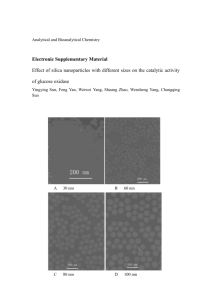

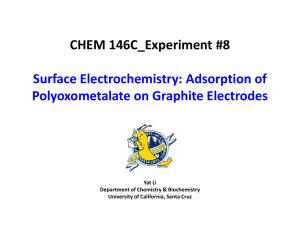


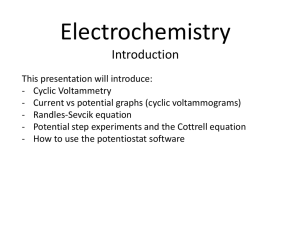


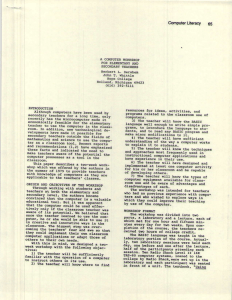
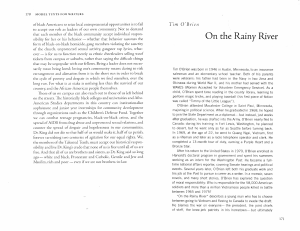
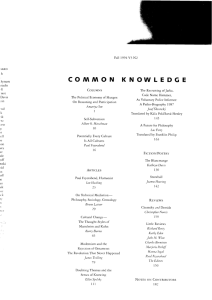
![[download this issue] 12.60mb](http://s3.studylib.net/store/data/008752053_1-1b69cad21beeda97e42e1c730b5ede25-300x300.png)